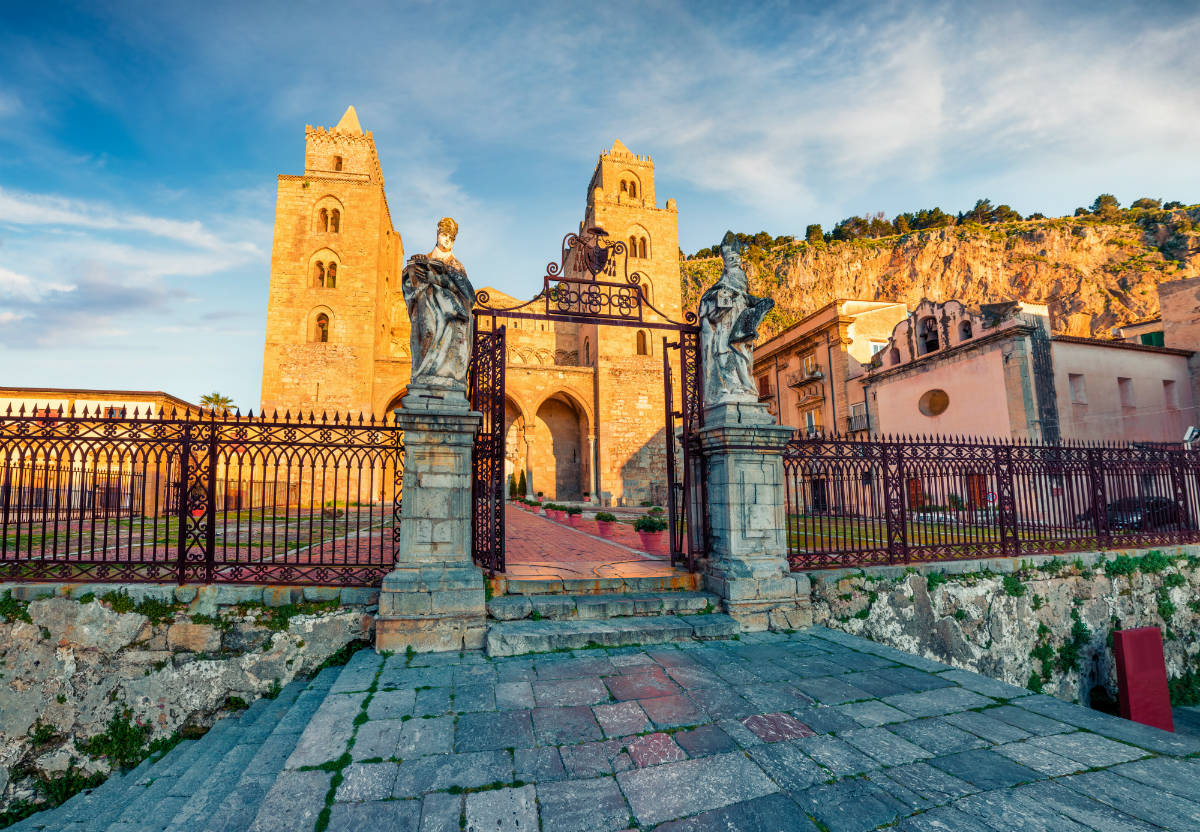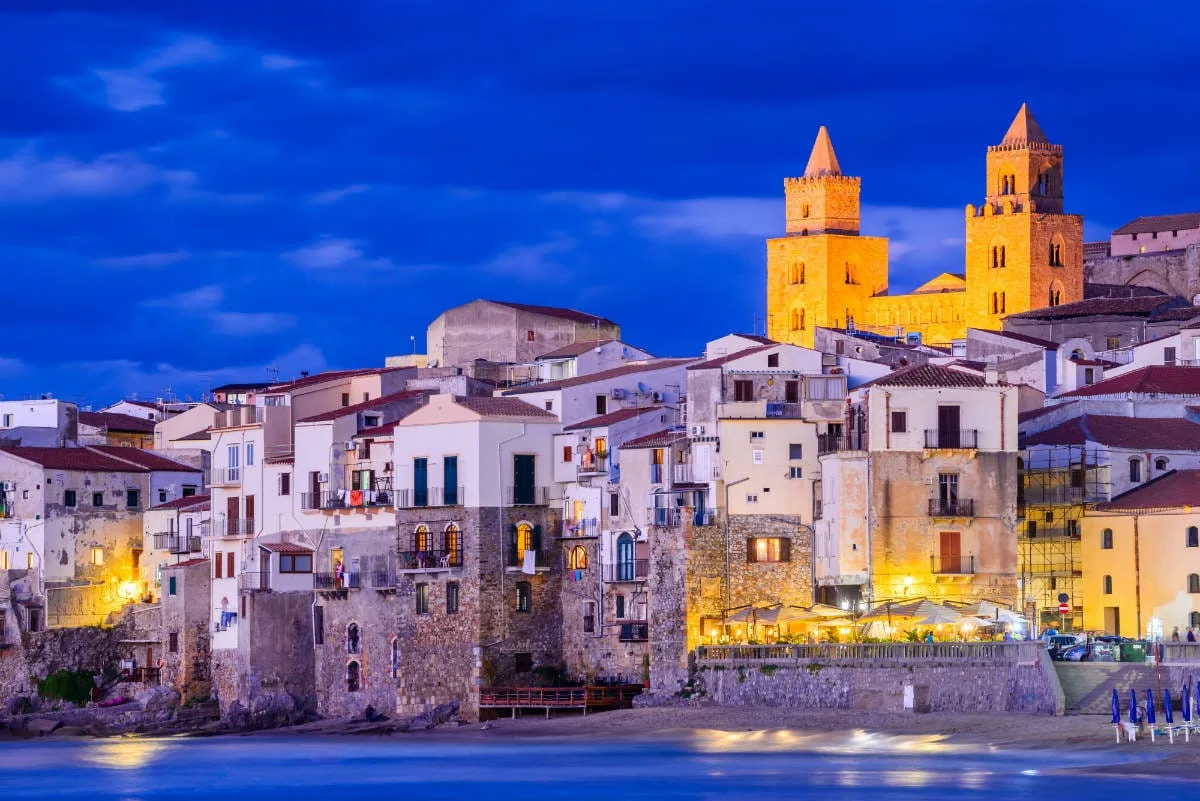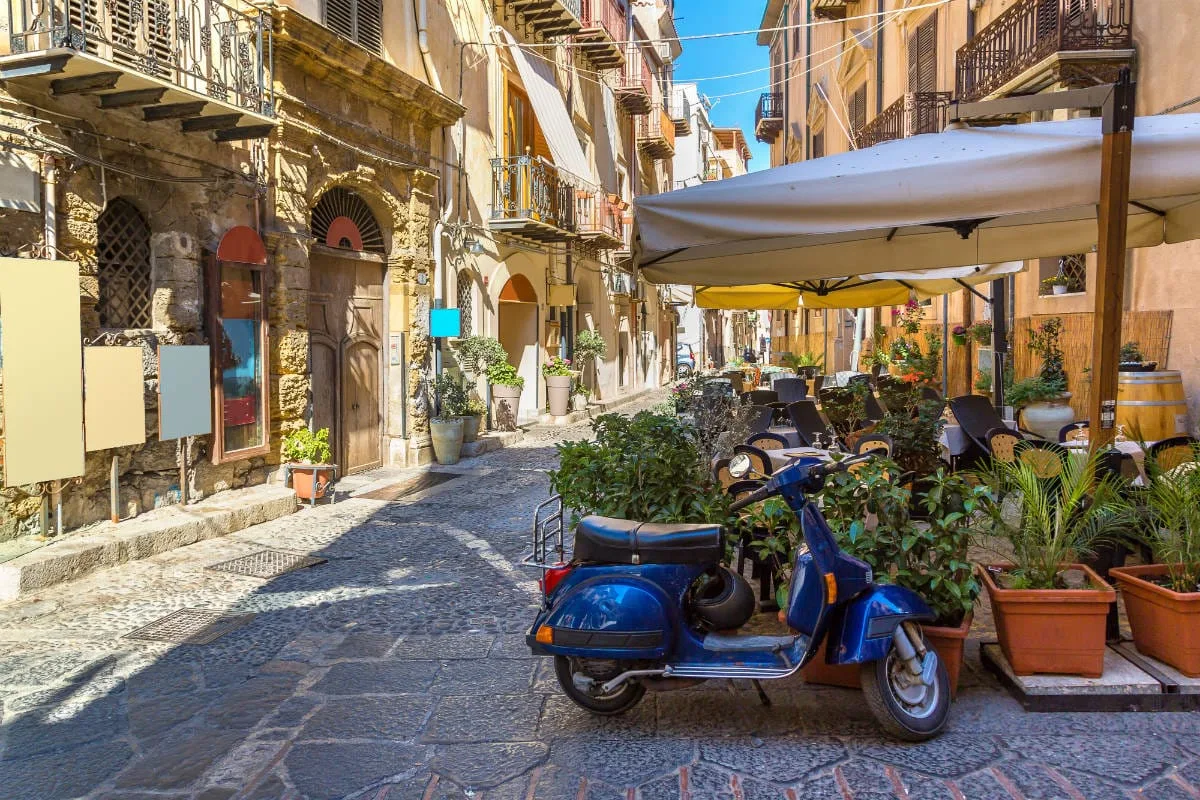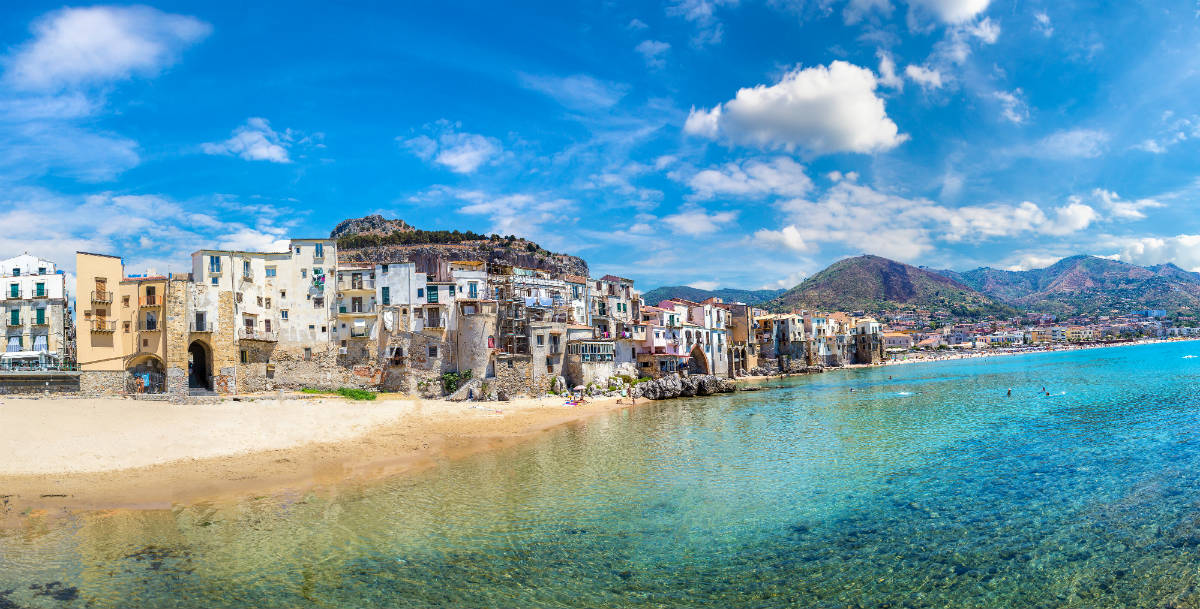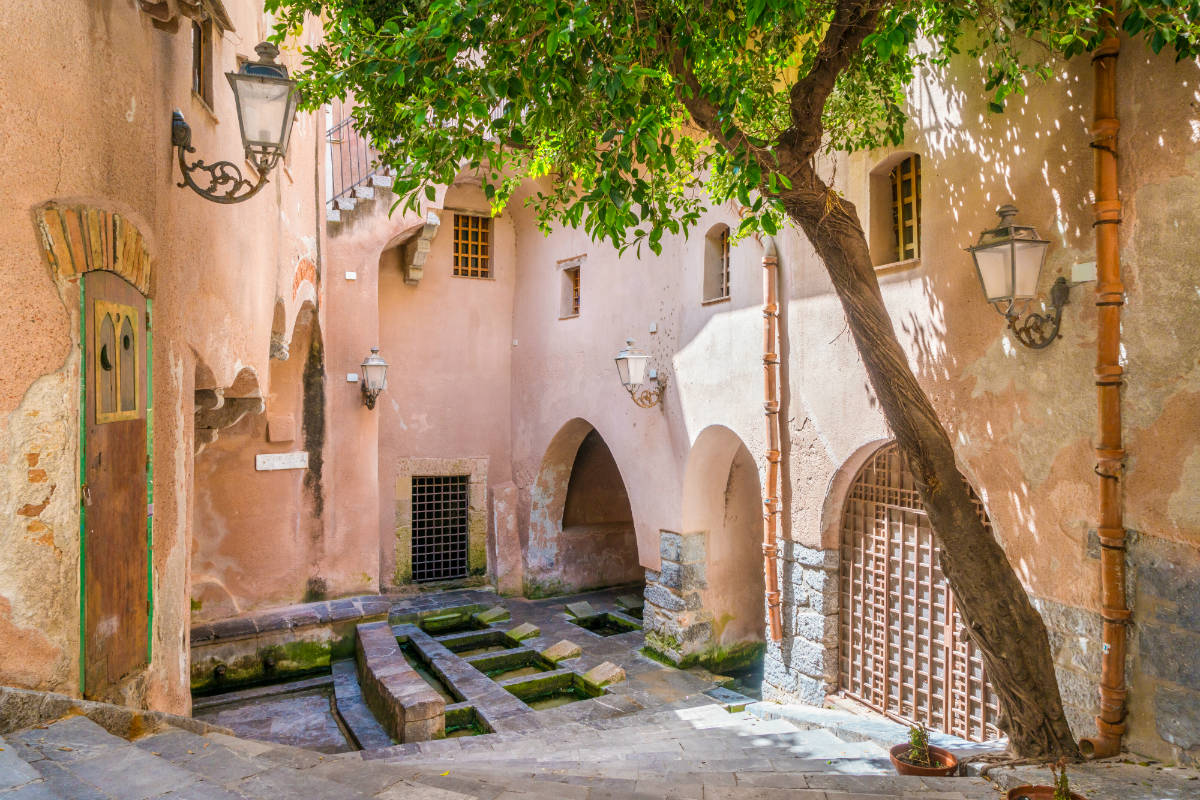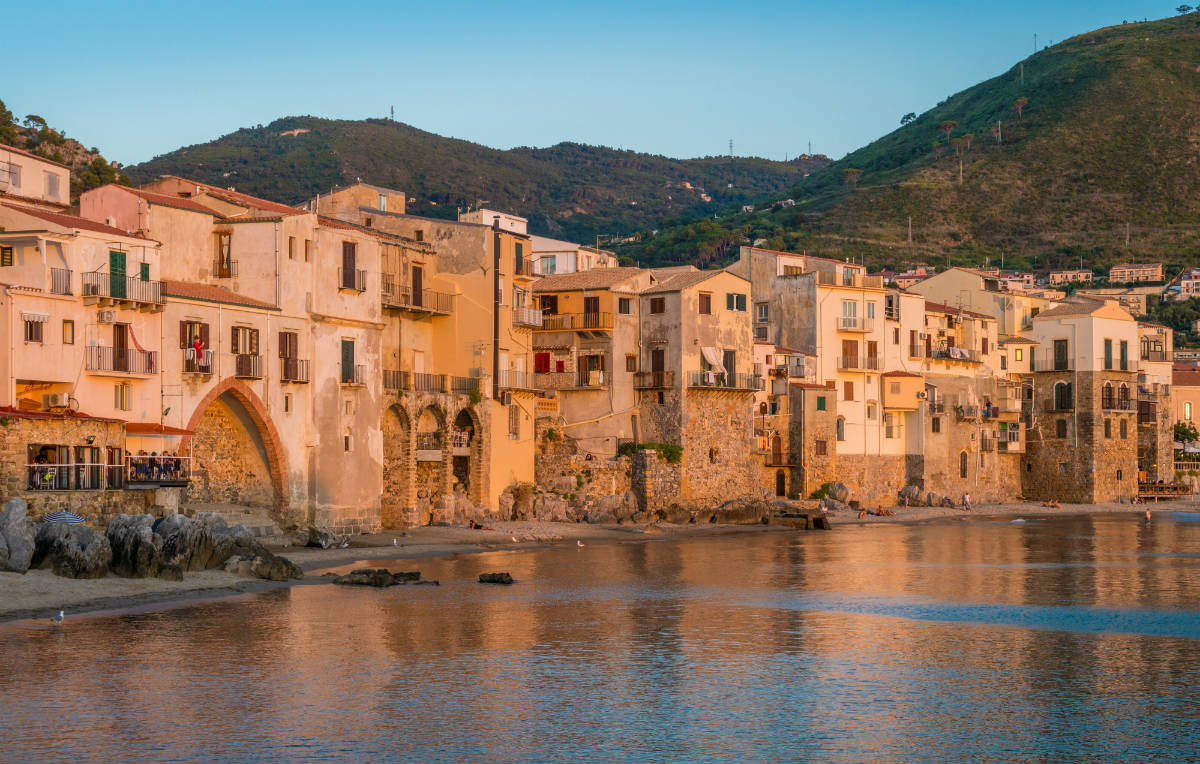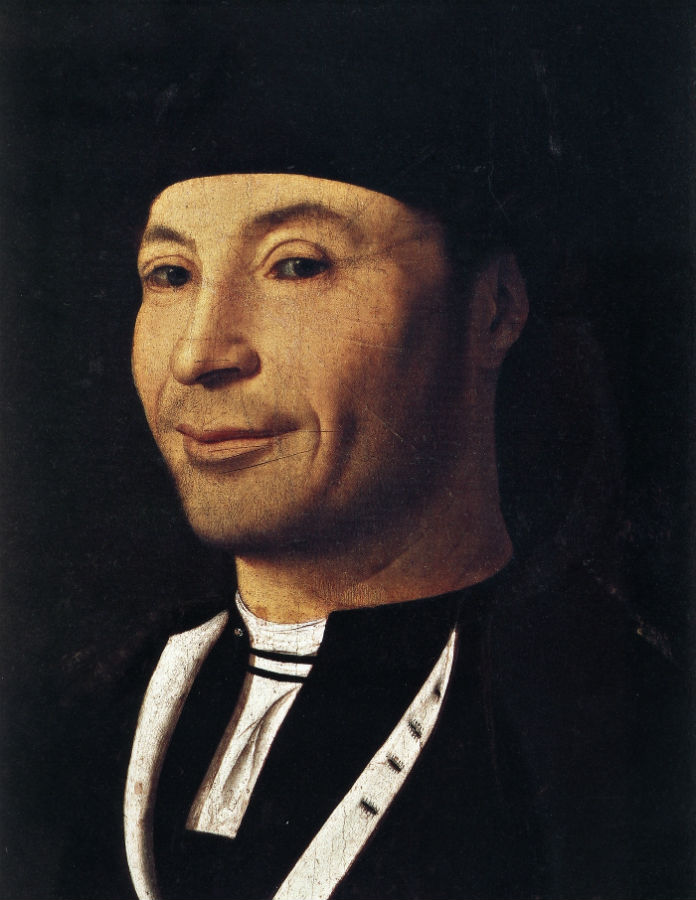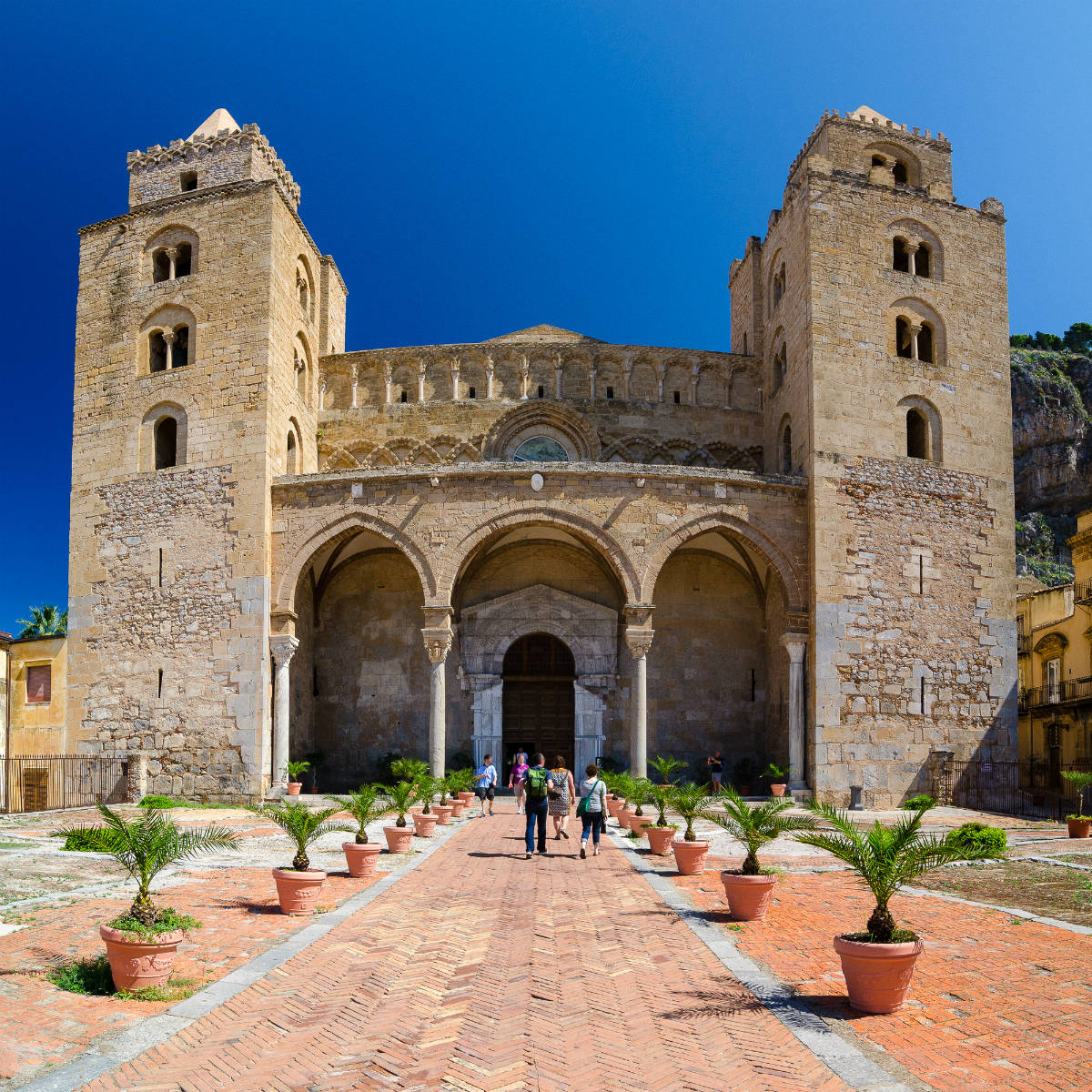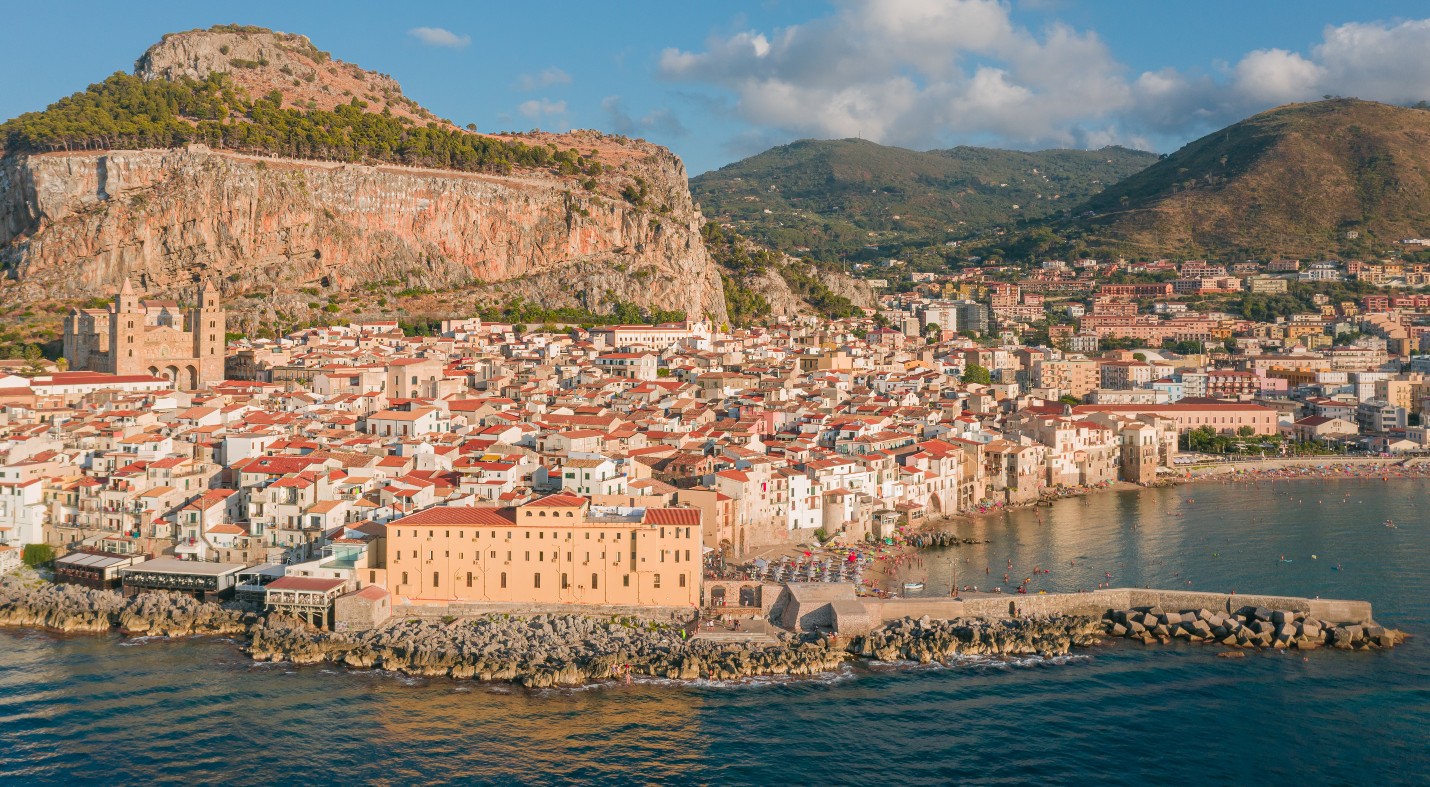Cefalù is one of the major seaside towns in the entire region, and its medieval core is located at the foot of the Rocca. To fully enjoy all the natural and artistic beauty of the landscape and the town, we recommend carving out at least two days.
An ideal starting point for exploring the center of the village, characterized by narrow streets paved with the pebbles of the beach and the limestone of the Rocca, is the Lungomare Giuseppe Giardina, where you can stroll along accompanied by the sound of the waves and the undertow of the sea on the beach.
Once on Via Vittorio Emanuele, it is possible to immerse oneself in the historic center admiring the many small tourist stores and traditional houses. Passing by the small staircase known as 'a lumachella,' one arrives at the town's ancient medieval washhouse, which still holds the three public tubs where women once washed clothes.
On the way to the Bastion of Capo Marchiafava, don't miss Porta Pescara: it is a simple opening between houses from which you can see the sea, with a very impressive view.
Continuing along the road you will reach the Bastion: an ancient defensive bulwark from the VXII century, which offers a splendid view of the cliff and the lighthouse. Today the structure houses the Digital Museum of the Arab-Norman History of Sicily.
But the real star of Cefalù is the wonderful cathedral, which overlooks the Town Hall Square. The cathedral, behind which is the Rocca, is a construction dating back to 1131 by the Norman king Roger II of Altavilla. A splendid crossroads of Arab-Norman art contaminated by Byzantine influences, the cathedral has a fairly bare interior (it is, after all, an unfinished work), just enough to bring out the marvelous mosaic of Christ Pantocrator, which measures more than 9 meters wide. The shining tones of the stones and the more than 150 colors of the mosaic make this work unique and unforgettable.
What to do in Cefalù: events and local traditions
Among the things to do in Cefalù, we cannot fail to include the climb to the Rocca that towers above the town. Reaching the top of 'u castieddu,' in local dialect, 268 meters high, is possible by walking along an ancient medieval path equipped with signs. The walk takes two hours and requires some effort, which will be well rewarded by the spectacular view from the top.
The Rocca is a place of great interest, both historical and natural, accessible all year round at different times, depending on the season. A UNESCO-protected property. On the path, it is also possible to glimpse the remains of the 9th-century BC Temple of Diana and the ancient castle of Cefalù, built in the 13th century.
Among the things to do in Cefalù, we also suggest a visit to the Mandralisca Museum, founded by Baron Enrico Pirajno of Mandralisca. The facility houses 900 works, including books, historical and artistic artifacts, and even a piece of auteur art: we are talking about the 'Portrait of an Unknown' by the famous 15th-century painter Antonello da Messina.
Among Cefalù's best-known local traditions: the 'Fruottula,' or Bread Festival, held on June 6, the day before the solemn feast of Corpus Christi. This is a secular procession, without clergy, during which the banners of the farmers' guilds (the 'viddani') are carried through the streets, with marvelous and gigantic floral arrangements reproducing objects and animals.
From August 22 to 25 there is "Camp@rt Festival," an event dedicated to art in all its forms that transforms the town into an outdoor creative cultural laboratory.
Typical dishes of Cefalù: the local gastronomy
There are numerous gastronomic traditions in Cefalù that draw on Sicilian culinary culture and its Arab and Greek contaminations.
Among the town's typical enogastronomic specialties are sardines a "ghiritalieddu": a dish made with cleaned and "rolled" sardines stuffed with breadcrumbs, grated cheese, garlic, parsley, raisins and pine nuts, lemon juice and oil;
Also worth tasting is the codfish a "ghiuotta chi patati," prepared according to tradition with a special batter and with chunked potatoes, prepared separately with onion, garlic, salted anchovy, celery, "strattu" (failing that, tomato paste), and black olives.
Among desserts, noteworthy is the famous almond paste, with which Sicilian pastry chefs create true masterpieces for the eye and palate.


